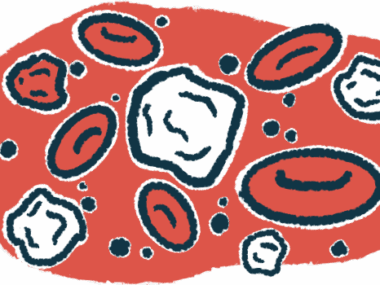Polyphenols in Blueberry Leaves May Reduce Sjögren’s Lacrimal Dryness
Mice fed blueberry extract with medicine to treat dryness saw more tear production
Written by |

Polyphenols in rabbiteye blueberry leaves may help lower eye dryness in Sjögren’s syndrome, a mouse study suggests.
“Blueberry leaves are foods that can be consumed daily, and we suggest that their intake may be useful in relieving the symptoms of lacrimal hyposecretion [low production and release] associated with Sjögren’s syndrome,” wrote the researchers, whose findings were reported in “Blueberry Leaf Extract Prevents Lacrimal Hyposecretion in Sjögren’s Syndrome-like Model of Non-obese Diabetic Mice,” published in in vivo.
The leaves of the rabbiteye blueberry are known in Japan for their antioxidant and anti-inflammatory properties, due to their richness in a class of chemical compounds called polyphenols.
In primary Sjögren’s syndrome, a misdirected autoimmune attack against the glands that produce tears and saliva leads to dryness in the eyes and mouth. Current treatments can only reduce these symptoms.
Non-obese diabetic (NOD) mice have been used as Sjögren’s models, since they exhibit many of the human disease features, including impaired tear and saliva production from inflammation. In past studies, several polyphenols were shown to increase saliva production in NOD mice.
“There are no reports of foods that have ameliorating effects against impaired lacrimal secretory function in NOD mice,” said the researchers at the University of Miyazaki in Japan who investigated the effects of blueberry leaf hot water extract (BLEx) on tear production in male NOD mice.
Evaluating tear production with blueberry extract
They began by analyzing the content of proanthocyanidins — a class of polyphenols — in BLEx. This analysis revealed the extract contained 444.4 mg/g of proanthocyanidin, 119.9 mg/g of chlorogenic acid, and 20.9 mg/g of rutin. It also contained 12.3 mg/g of catechin and 5.6 mg/g of epicatechin.
Male NOD mice were fed a normal diet supplemented with 1% of BLEx (NOD-BLEx) or without it (NOD-control) for two weeks. No differences were seen between the groups regarding the animals’ weight gain with each diet.
To evaluate the impact of BLEx on tear production, the animals in both groups were injected with pilocarpine, a medicine to treat dryness. Pilocarpine was injected intraperitoneally (into the abdomen) at a dose of 0.5 mg/kg and tear production was measured every two minutes after injection, up to 20 minutes.
Both groups saw increases in tear production up to 10 minutes after pilocarpine injection. However, BLEx-fed NOD mice showed significantly higher tear production 10 and 16 minutes after injection compared with control mice.
Also, both the total and maximum tear volume measured up to 20 minutes were higher in BLEx-fed NOD mice than in the control mice. The effects of BLEx in preventing dryness of the lacrimal glands were restricted to NOD mice, which naturally develop eye dryness, as no effect was seen when used in a normal mice strain, called BALB/c.
Researchers then analyzed lacrimal gland tissue to evaluate how BLEx affected the infiltration of immune cells, but no differences were seen between NOD-control and NOD-BLEx mice.
They also assessed the levels of inflammatory cytokines — molecules that mediate and regulate immune and inflammatory responses — particularly interleukin-1 beta (IL-1B) and tumor necrosis factor alpha (TNF-a). The levels of both were previously reported elevated in the lacrimal glands of NOD mice.
While no differences were seen in the levels of IL-1B between NOD-control and NOD-BLEx mice, TNF-a levels were significantly decreased in the lacrimal glands of NOD-BLEx mice.
No differences were seen between both groups in the activity levels of major tear production-related genes. Also, the levels of a protein called arginase-1 that’s suggested to be involved in lacrimal gland dryness in NOD mice showed no differences between the two groups.
BLEx did inhibit the activation of autophagy, a process used by cells to break down and recycle certain components, as shown by a marked decrease in the ratio of light chain 3 (LC3) II/LC3 I proteins.
“The mechanism of BLEx in improving lacrimal secretory function might be inhibition of autophagy activation via the reduction in cytokine TNF-a,” the researchers wrote, noting more research was needed on this subject.
“In the future, it will be necessary to investigate the mechanism of action in more detail,” they wrote.






